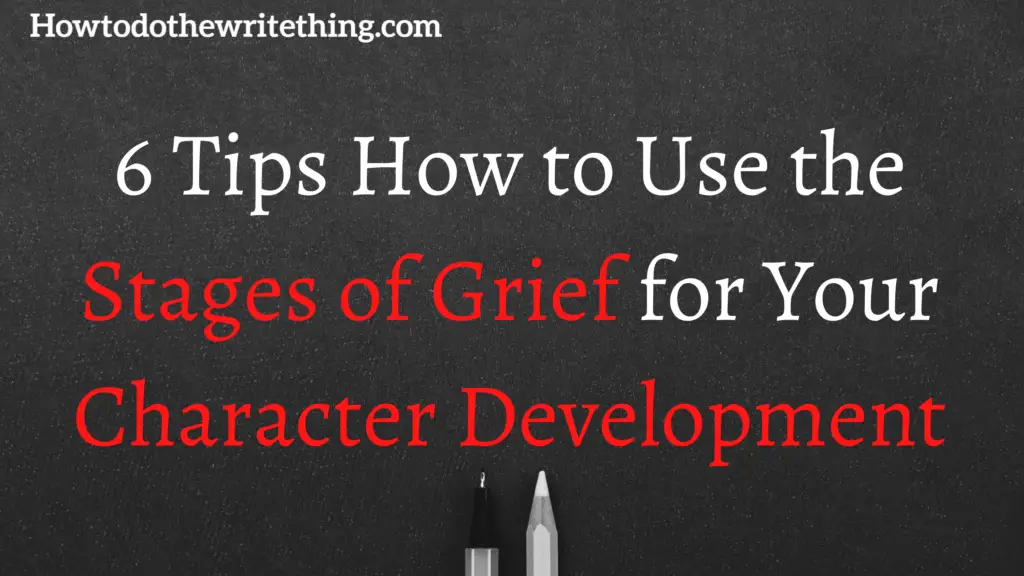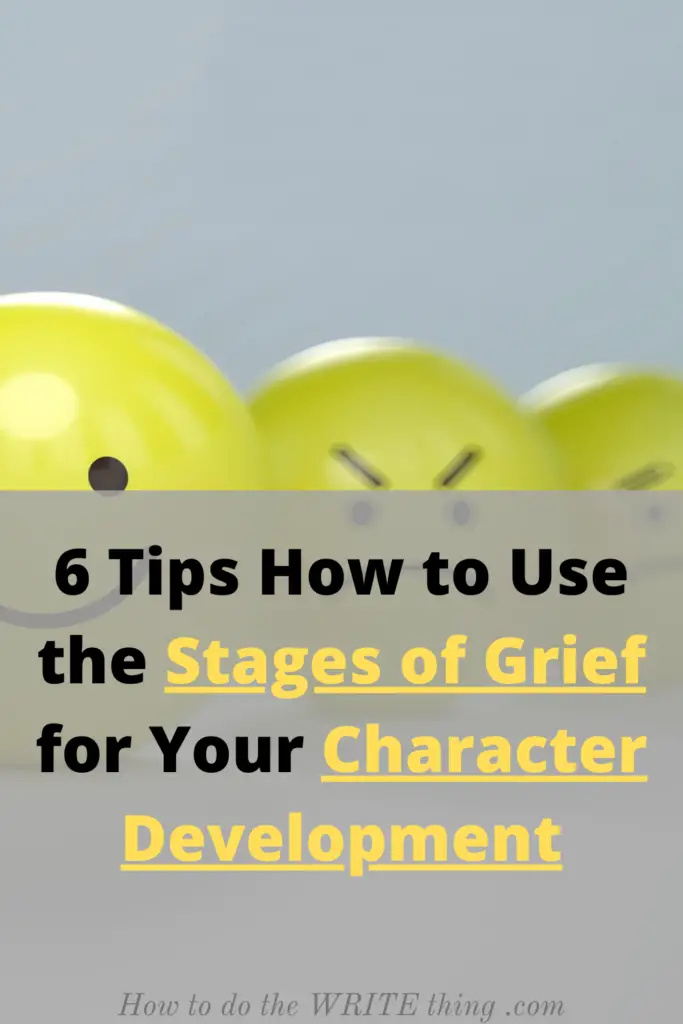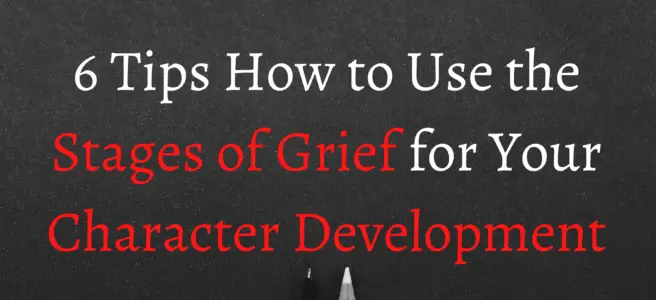
How to Use the Stages of Grief for Your Character Development
The stages of grief often studied in psychology are stated as followed and usually appear in this order.
- Denial
- Anger
- Depression
- Bargaining
- Catharsis
Psychologists try to use these to help people in real life deal with their grief and depending on where they are at in the list a psychologist might say they are close to or farther away from recovery.
In storytelling, we can mostly use these as a road map for our character’s story.
Introduce a character’s grief.
A good way to start the process is to put our character through a tragedy in front of our reader.
They lose a spouse or child. It could be any type of grief but usually, in the case of a good drama, it’ll be pretty traumatic.
In “The Good Dinosaur,” we see the protagonist lose their father in front of their eyes at a young age which sends them down the path of grief.
Help us see each stage.
Have your character say or do little things to let us know that they are struggling.
When it comes to the stages of grief they aren’t always obvious so you may want to have specific details in mind of how to show that the character is dealing with it.
Depending on how the character deals with it is in a way revealing to the audience the kind of person they are under the service.
For example in the denial stage depending on who you want your main character to be they may react in different ways.
Some character’s denial will look like them partying and having a good time. They may Do drugs and drink and do other things that seem like fun and pleasurable to the outside world but really the character is trying to drown their sorrow.
A different character may show their denial in a way of not dealing with the tragedy at all. They may never talk about it and they might get very busy with work and anything else they can think of to get away from ever thinking of the event happening.
They deny the fact by staying busy.
Anger.
You can break a character out of their denial by having another character “butt in.”
Your secondary character may see the protagonist in denial and may start to push them towards revisiting the event instead of running from it.
We see this very clearly in “The Lion King.”
Simba sees his father die and blames himself. He runs from the fact and lives a secondary life of luxury with new friends and a new life to avoid the pain of his past.
When Nala gets to him, she forces him to revise his past and face his darkness. His first reaction is anger, he wants to be left alone and doesn’t want to deal with it.
It doesn’t have to be a character that interrupts their denial. It can be an event or dream. It can be any number of things but usually, the character doesn’t just wake up one day and decide to change of their own merits.
You need to find your catalyst for their interruption of denial.
In everyday life sometimes people will get together for a friend and they call this an intervention.
Want to get paid to write? Check out Writing Paychecks
- There is a simple method over 30,000 people use to get paid for freelance writing online.
- Opportunities can get started in just minutes a day, all from your home couch.
- It’s easy to get started! No previous experience or degree required to start.
- Exclusive job listings for writers, updated daily.
Check out Writing Paychecks to see if you can start getting paid to write today.

Interested in starting a blog of your own? Check out Bluehost.
Being forced to reconcile the past leaves the main character feeling depressed.
The weight is too much to bear emotionally and they fall apart under it.
Depression can last for hours, days, weeks, months, even years in some circumstances.
This amount of time is important for your reader to understand just how much the event really “wrecked” the character.
Denial and depression can both simulate a lot of meaning based on the amount of time it takes the main character to get through it.
If years are wasted in denial, anger, and depression this is a life change for a person. And they will have much baggage to work through and deal with.
This baggage comes as a part of their story arc. It takes time to sort through the traumatic event itself as well as the extra baggage they picked up being depressed.
I recently watched a story where a teen suffers the loss of her entire family in a crash. She immediately spirals into self-destructive habits. Goes from being a straight-A student in college to living in a brothel doing drugs and selling herself for drugs and money.
Making such a dramatic shift in life causes a natural flow of extra events to work through once the character gets interrupted and has to face their past.
Hitting rock bottom.
At this point, the character has given up on denial and given up on running away. They are willing to change they just don’t know how and don’t have anything left. Psychological research has come to call this “the bargaining stage.”
In this stage, the character usually bargains with someone more powerful than them.
Whether it be God, or just someone willing to help that is in better circumstances.
They may find themselves in a situation where the hotel owner says, “you can stay here rent-free for now, but if I catch you with one needle, just one and you are out again! You understand?!”
And they say yes. This is the bargaining. They are finally willing to “play ball.”
They are not running anymore and they want help. They don’t know how hard it will be to say no to all the temptations they’ve built up in their denial and anger but they are at least taking steps to get back to a better way of living.
Just because they are in the bargaining phase doesn’t mean they are out of the woods just yet. In fact, this usually means things are about to look even harder for them in retrospect. They are going to go through suffering to get out of the hole they are in.
A great release.
By this point, you should have built up a lot of tension for the reader. So much so that they are actively looking forward to a break in the tension for the main character.
This stage can be known as catharsis.
The character will most likely go through a few more pumps in the road leading to an ultimate climax and then release or relief. They may have finally made it through all the steps of their grief and they might be able to start living a better life.
This depends on if your story for them is a tragedy or not.
If it is a tragedy they may end up dying because of their life choices during denial and anger.
So keep this in mind if you are writing something where they end up not making it through the other side because your setup might end up being slightly different.
By following the natural 5 associated stages of grief as observed by some psychologists, you can see a clearly mapped out story arc for the main character.
The audience can watch the main character go through traumatic grief, the recovery process, and see where they end up because of the trauma, and how they personally made choices revolving around it.
If you enjoyed How to Use the Stages of Grief for Your Character Development, take a moment and consider sharing this social-friendly image to say thanks, and feel free to comment with your thoughts on the post below! 🙂


Want to get paid to write? Check out Writing Paychecks
- There is a simple method over 30,000 people use to get paid for freelance writing online.
- Opportunities can get started in just minutes a day, all from your home couch.
- It’s easy to get started! No previous experience or degree required to start.
- Exclusive job listings for writers, updated daily.
Check out Writing Paychecks to see if you can start getting paid to write today.



That’s all for the moment.
Hope this helps!
Happy writing!
Another Post you Might like:
Mythical Creatures | 7 Tips on How to Write Mythical Creatures
Other Popular Posts you might enjoy:
5 Tricks How to Hide Your Villain Right Before Their Eyes
10 Tips How to Write Villains that Play Mind Games with Their Victims
4 Tips How to Write your Character Hitting Rock Bottom
10 Toxic Bad Habits That’ll Crush Your Fictional Character’s Relationships
How to Write From Your Villain’s Mind.
How To Write 4 Scenes That Reveal Who Your Character Is Seamlessly
Other Resources You Might Enjoy:
How to Start a Blog in 11 Simple Easy Steps
How to Write a Book: 32 Tips | Your MASSIVE Guide How to Write a Book
Interested in starting a blog of your own? Check out Bluehost.
Check out these FREE trial resources from Amazon for when you work from home (or are stuck at home 🙂 ) As an Amazon associate, if you do sign up or buy anything using Amazon links from our site we make a commission at no extra cost to you.
Free Prime Membership Trial:
Try Amazon Prime 30-Day Free Trial
Try Prime Discounted (Free Trial)
Get Unlimited Music for Free (30-day free trial):
Free Baby Registry:
Shop Amazon – Create an Amazon Baby Registry
Make your Free Amazon Wedding Registry:
Create an Amazon Wedding Registry
If you enjoyed How to Use the Stages of Grief for Your Character Development, take a moment and consider sharing this social-friendly image to say thanks, and feel free to comment with your thoughts on the post below! 🙂


Make sure your posts are readable. Use this readability score check
Want to check out a writer’s community to test your writing and get feedback?
We hope you enjoyed: How to Use the Stages of Grief for Your Character Development!

